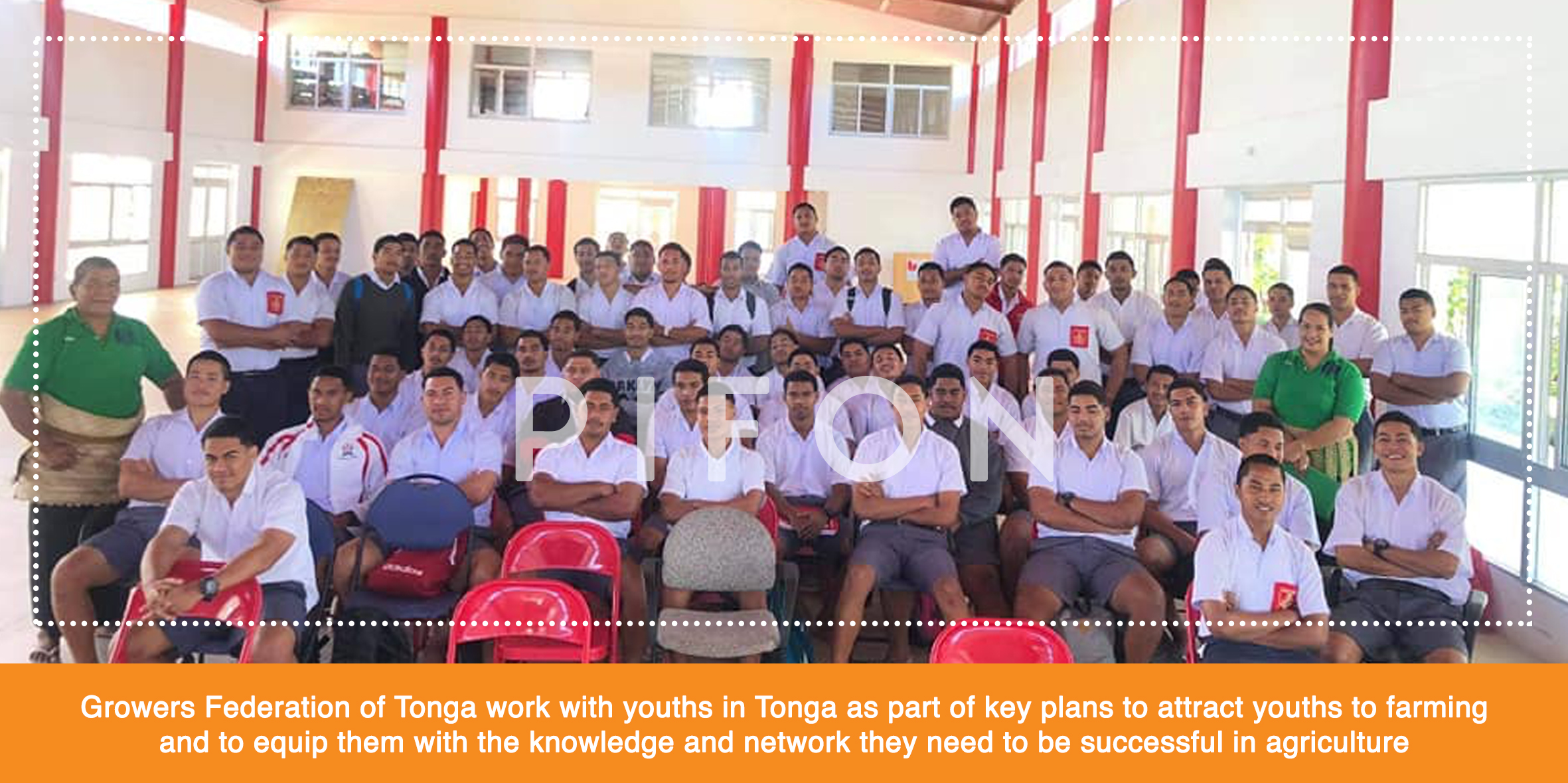b l o g
d e c e m b e r 2 0 2 1

By Heiko Bammann, Agriculturalist Economist, Agrifood Economics Division, FAO Headquarters, Rome
In the Pacific Island region and across the world much has been said about opportunities the agriculture sector offers to youth.
However, many rural youth are still leaving the islands for more attractive jobs and career opportunities in urban centres or overseas. This has to change and the work of PIFON is making great contributions in make agriculture more attractive by promoting viable agribusinesses and sharing best practices, technologies and success stories.
In this article I would like to introduce three publications that can help farmer organisations in this endeavour.
Investments in the development of sustainable agricultural value chains offer immense opportunities for youth in rural and urban areas. The engagement of young people in agriculture value chains and agrifood systems development is key to addressing the significant untapped potential of this sizeable and growing demographic.
Young people are indeed best placed to rejuvenate the sector, acquire the knowledge and skills needed to innovate, uptake new technologies, foster competitiveness and spearhead the digital transformation
With their ability to learn fast and their innovative spirit, youth can drive change and accelerate the transition to more sustainable production and consumption patterns that are needed to achieve the goals of the Agenda 2030 for Sustainable Development and feed the world’s growing population.
In their school to work transitions, youth are driven by economic opportunities and the value chain development approach can help to identify these opportunities and decent youth employment within the sector.
Youth sensitive value chain analysis and development provide tools and methods to identify, select and promote the most promising value chains and opportunities for youth inclusion, youth employment and entrepreneurship
With a focus on youth, their heterogeneity, inequalities and unique talents, the value chain approach can therefore assist with the dual objective of creating new and improving existing jobs for youth. FAO is about to publish the “Youth Sensitive Value Chain Analysis – Guidelines for practitioners”. It is based on experiences from FAO projects working with youth and provides the background information and guidance needed by practitioners for selecting an agricultural value chain with high potential for youth employment and entrepreneurship.
The guide offers tools to conduct context-specific youth employment analyses and explains how to identify and analyse constraints and opportunities for decent youth employment at each function of the core and extended value chains.
Given that youth engagement in value chains is heavily impacted by social issues and value chain governance, a push/pull factor analysis is introduced as a tool to assess the factors that push and pull youth into employment and entrepreneurship in the VCs
Further guidance is also provided for the inclusion of economic, social and environmental sustainability considerations, as well as how to develop youth inclusive strategies in value chain upgrading actions and supporting policies.
To next publication can be used to strengthen farmer-market linkages. The Living Income concept evolved over the past five years and was developed by “an alliance of partners dedicated to the vision of thriving, economically stable, rural communities linked to global food and agricultural markets”.
The goal is to support activities focused on improving smallholder incomes towards living incomes, aiming at enabling smallholder farmers to achieve a decent standard of living
Applying the tools and making good use of the information gained, empowers companies and producer groups and makes them equal partners with any businessthey engagewith. Most importantly, the concept can contribute to make business models more inclusive which is especially important for negotiating contracts, but also to strengthen group decision making and agency.
More information is provided in a leaflet prepared by GiZ . The comprehensive guide is available for downloading from the link provided here: https://www.living-income.com/li-toolkit
Finally, FAO has recently published an Innovators Handbook entitled “Enabling Sustainable Food Systems”. This book provides a wealth of resources and practical examples that can be used by companies, agri-enterprises and also businesses run by farmer groups to improve their operations.
The book is written in an easy to follow style and has a nice layout. The technical topics covered are grouped by four relevant agribusiness areas: engaging with consumers, producing sustainably, getting the product to the market and getting organized. Particularly important to PIFON and its members is the last area that deals with relevant agri-business practices related to finance, working together as farmer groups, and making connections to new partners.
Some of the information mentioned in the three publications above may already be known to PIFON members but it is always worth the time to reflect, rethink what we are doing and consider new and innovative ways. If there is a need for more information, please feel free to contact the FAO team working on famer-market linkages ( SMART-Team@fao.org ) or the FAO Representation in your country.
* This time last year Heiko Bammann also wrote : Youths have to transform the agriculture sector in the Pacific Islands
